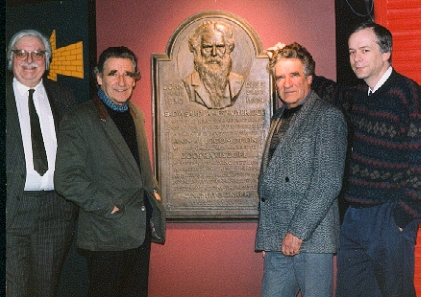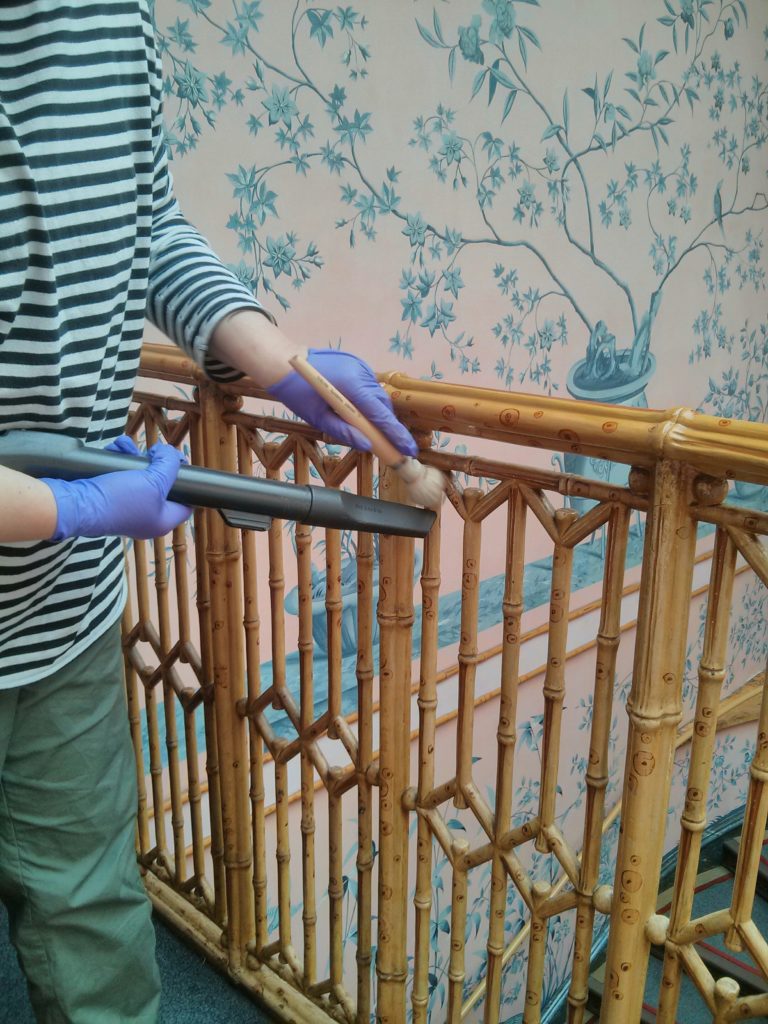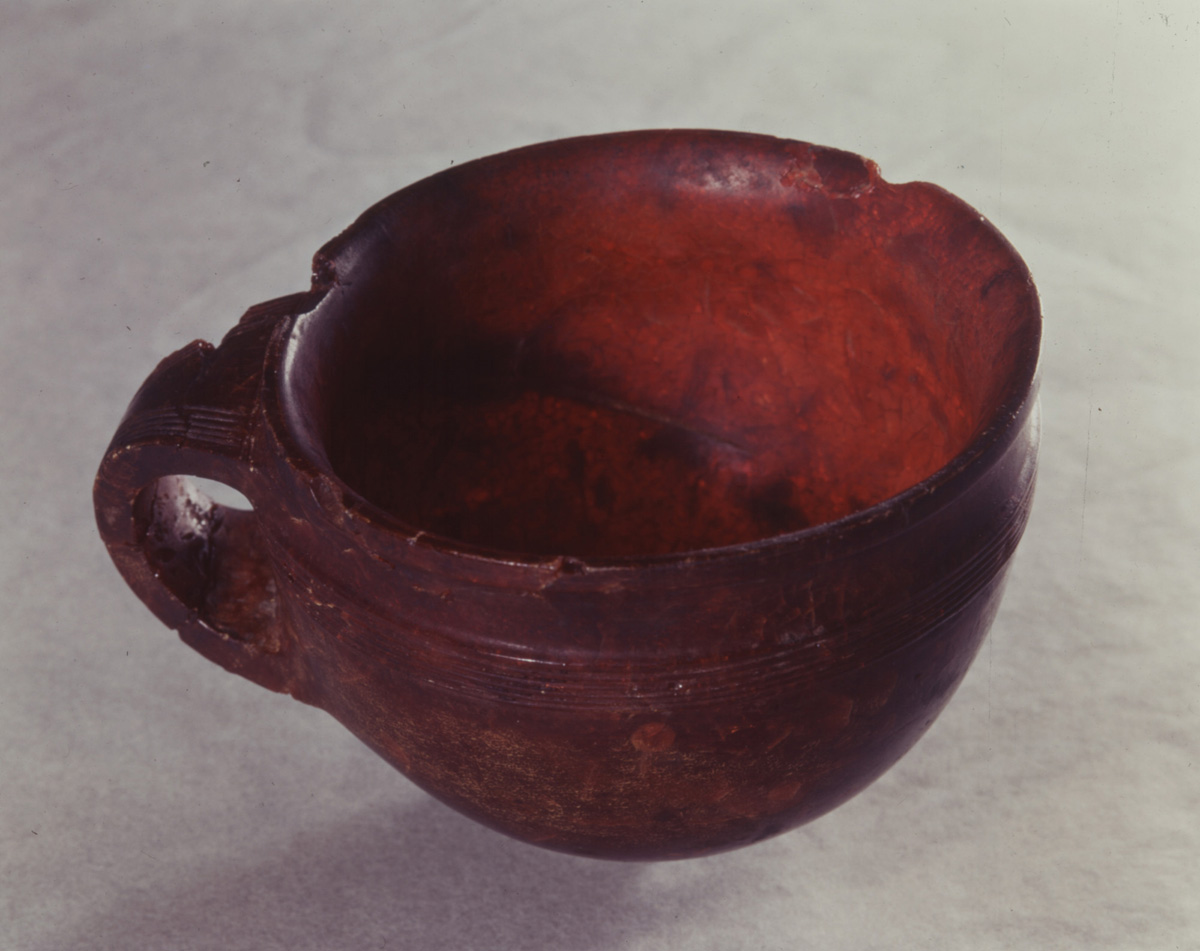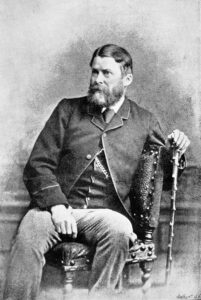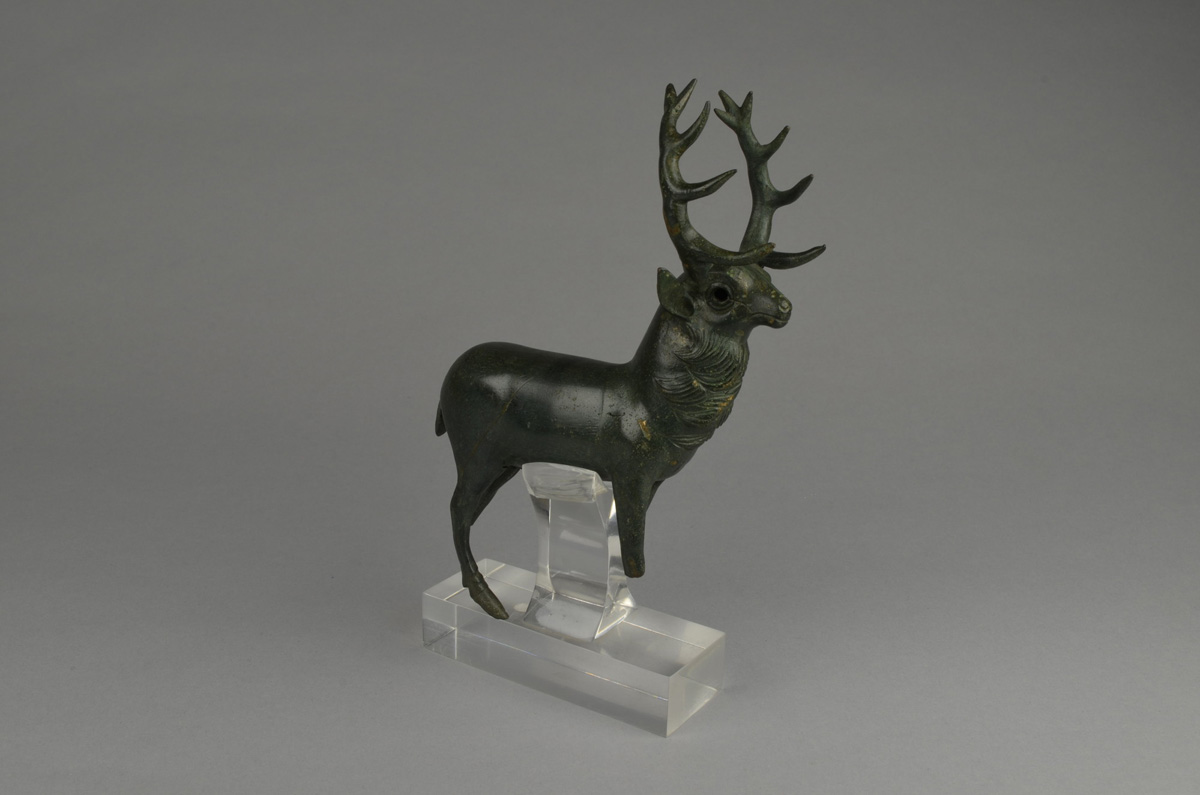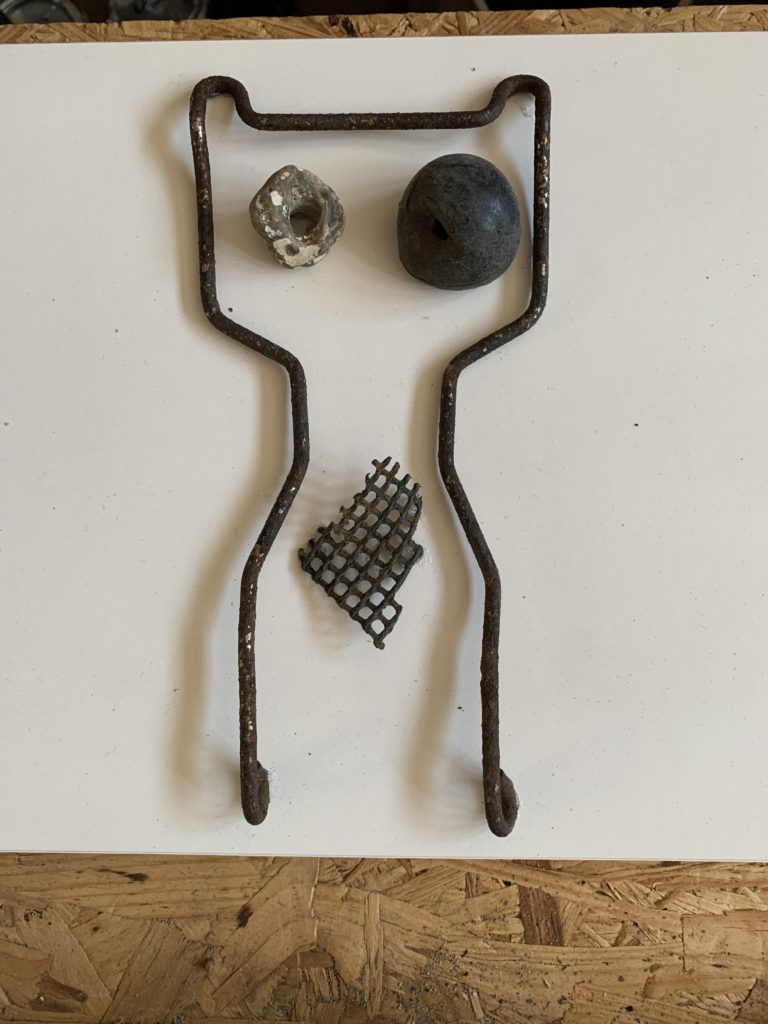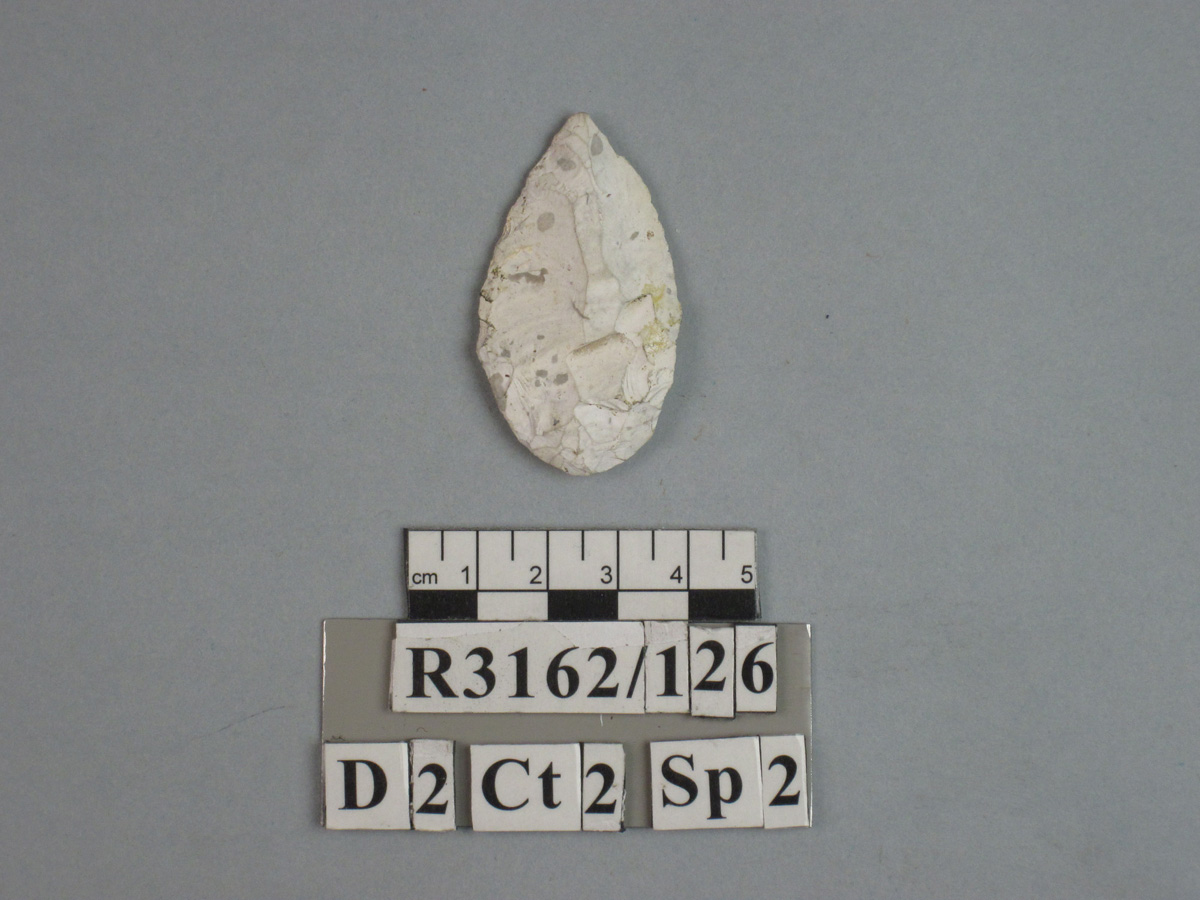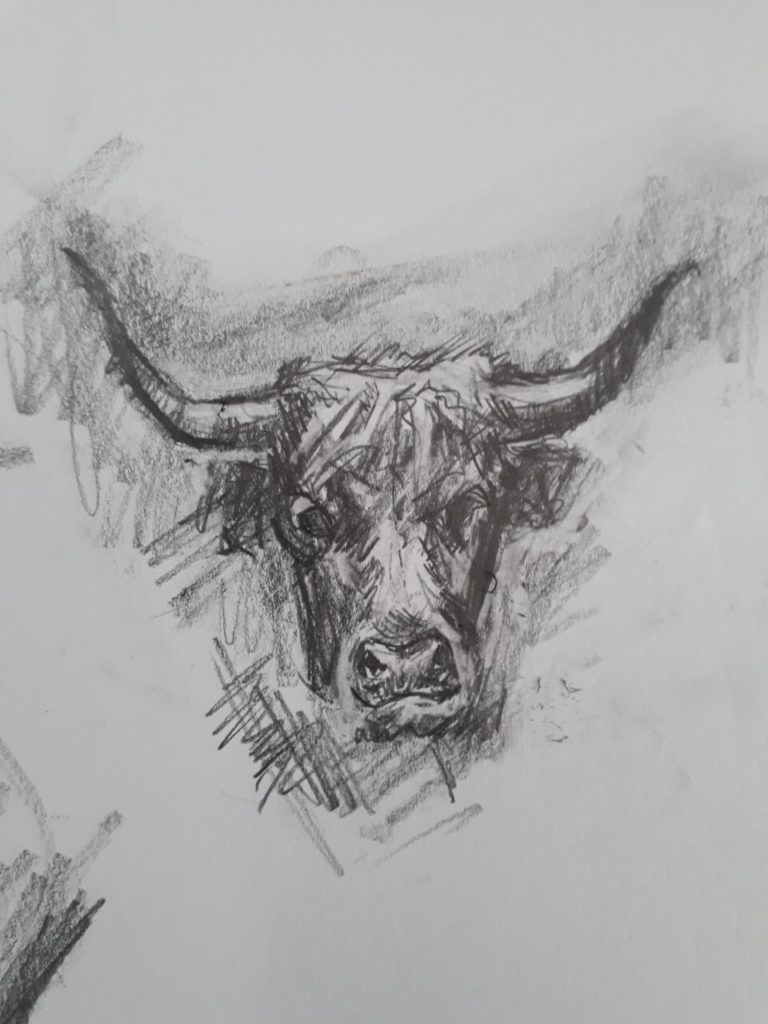
This is a legacy story from an earlier version of our website. It may contain some formatting issues and broken links.
Our Lockdown Craft Challenge is a new series in which makers at Hove Museum use its craft collections to inspire you to create at home. In this second post, Grace and Rebecca look at ceramicist Siddig El’ Nigoumi and his inspiring blend of cultural influences.
Hove Museum & Art Gallery houses one of the best collections of Contemporary Craft in the South East. It includes the South East Arts Craft Collection and a host of national makers including Alice Kettle, Cynthia Cousens, Alison Britton, and Richard Slee. This collection contains an eclectic mix of makers, techniques and materials and is a great resource to get your creative juices flowing!
As we aren’t able to open our doors to the public just yet, each blog will focus on an object from the collection and challenge our talented Hove Museum maker Rebecca to make something inspired by the piece – and to come up with some crafty ideas that you could make at home too.
This week’s piece is: Siddig El’ Nigoumi Dish 1983

Siddig El’Nigoumi, Fish Dish, 1983
Siddig El’Nigoumi

Siddig El’ Nigoumi, signature scorpion which appears on all his pieces
Siddig El’Nigoumi (1931-1996) was a Sudanese ceramicist. Nigoumi’s ceramics are famed for their infusion of African, Arabian and European influences, all of which he experienced throughout his lifetime. His highly skilled and versatile body of work led to the popularisation of using African pottery techniques within British studio ceramics. Siddig’s passion for shape and form began as a child when he modelled objects from clay found along the river banks of the White Nile. As a student at Khartoum Art School, he studied general arts and crafts and became a calligrapher. El’Nigoumi then moved to London to study ceramics and clay modelling at the Central School of Art. He returned to the Sudan to teach before eventually settling in the UK in 1967 where he continued his teaching career.
A Medley of Cultures
As a teacher at Khartoum El’Nigoumi is said to have encouraged his students to look towards their own cultures and traditions to inspire their work. When Hove Museum acquired Fish Dish into the collection in 1983, Siddig provided a statement describing his influences, he wrote:
“The Sudan, where I came from, is a country where African and Arab cultures meet. This mixture produced a unique culture of it’s own in the arts and crafts including Arabic calligraphy”.
“During the 1970s when I came to live in this country, I naturally used Sudanese methods of making and decorating pottery. But having previously studied ceramics at the Central School, London, this enabled me to add and use new techniques and materials such as the wheel, slips, plaster of Paris, gas and electric kilns. Altogether, this mixture of African and European are the guide lines for the kind of work I am producing now. I must add though, that the subject matter for decorating is no longer confined to African or Sudanese material. The European culture also provided me with some gems like Greenham Common Camp (CND), the white arrows on the road for directing traffic, the Concorde jet, Rolls Royce and VW cars, Isle of Man symbol, the chalk horse of Salisbury Plain and others”.
Making

Siddig’s Beautiful line work detail
Siddig’s body of work ranges from tableware for his own use in the home, to decorative stone ware and earthenware vases, boxes, dishes and animals. His pieces were hand-built and included both thrown and sculptural forms.
Siddig’s Fish Dish was made from red earthenware clay from the Fremington clay in Devon. The clay was rolled out into a sheet and placed in a plaster mould and slip was brushed on to plan for the decoration. When the clay was leather hard in the mould, the dish was burnished. Burnishing is a typically African technique where the clay is rubbed over with the back of a teaspoon and polished pebbles which gives a sheen to the surface. The decoration was drawn on using a 6B pencil and cutting of the decoration using a metal knitting needle.

Detailed fish line work
The Challenge
Rebecca, as a teacher at Khartoum, Siddig is said to have encouraged his students to look towards their own cultures and traditions to inspire their work. He often took his students in the Sudan to analyse shapes at the Ethnographical Museum. I love this idea of making something inspired by different cultures you have been influenced by and have shaped you. I know that you have a blend of cultures in your life, so I challenge you to make something that is inspired by them.
Grace Brindle, Collections Assistant
Challenge Accepted!
This dish was really striking to me. I really liked the simplicity of having a central image of the fish on a plain background, but with lots of beautiful pattern work around the sides of the plate. Your eye is immediately focused on the fish, but the pattern on it is so much more eye-catching when you see it repeated all the way round the plates edge.
A mixture of linework, diamonds, squares, and spirals, although inspired by the Sudan, initially made me think of classical Greek pottery with their meander design decorative borders. I wanted to pick up on this when I was decorating my dish, I also wanted to pick up on the pattern work.

Greek key on a Renaissance Revival stove in the D.A. Sturdza House Cărturești Verona, Beautiful Buildings Pics CC BY-SA 4.0
A Welsh Brightonian

Margam Stones 7 Cross of Conbelin, Robin Leicester CC BY-SA
I love Siddig’s blending of culture in his pieces, I have lived in Brighton for many years but I am originally from Wales. I liked the idea of taking some modern local Brighton imagery into my plate decoration, but also merging this with some Welsh motifs. I grew up near the museum of Celtic stones in Wales where there were always lots of Celtic symbols. The carving on Siddig’s dish this made me think of those carvings. He scratched through the clay slip to produce his patterns. I wanted to pick some imagery that was going to be practical for me to do this too, simple lines and curves but still aesthetic and interesting to me.
A Striking Animal
I thought for a long time about what to use as my main image at the centre of the plate. I wanted to use an animal like in the original, but each time I had an idea it was for a creature that was far too detailed to carve-this would have taken away from the impact of the fairly simple animal shape from the original piece. A fish is such a simple motif to recognise, I needed to pick an animal that had a similar recognisable shape. I loved the idea of an octopus and it also picked up on classical Greek pottery that came to mind when I originally saw Siddig’s fish dish. An octopus has an easy very recognisable outline and its tentacle suckers would make great pattern detail.
Working the Clay

Flattening the clay, photo by Rebecca Lean
For the plate I used one pack of DAS red air dry clay. I worked the clay until it was ready to form a ball, using my hands and a rolling pin I flattened it until it was thin enough to start forming my plate but not so thin as to be too fragile. I added some clay to the centre back, this would allow me start to form my plate with an edge and it also meant that the centre had enough clay to make it solid enough for decorating. Using lots of water and my hands I shaped and smoothed the clay into the oval shape I had planned on, using almost a pinching shape with my finger I formed a lip around it. I added bits of very wet clay to the plate if I felt that a piece was getting a bit too thin, and after lots of working I finally had a decent oval shape.

Rolling out the clay, photo by Rebecca Lean
Forming the Octopus

Forming the octopus, photo by Rebecca Lean
I wanted to give my plate a slightly 3D quality along with the scratch work. I formed some wet clay and moulded it on to the middle of the plate using clay slip. I formed the body of the octopus, head and arms. Then with a sharp tool and a knitting needle I pierced holes into the arms to form suckers and I did the same for the eyes.

Octopus with knitting needle detail, Photo by Rebecca Lean
A bit rough round the edges

Sanding down the octopus, photo by Rebecca Lean
When the clay had dried it was time to carefully sandpaper any really uneven edges – I wanted to make sure though that a lot of the uneven texture remained. I liked the look of the 3D octopus arms but knowing that I was going to a very 2D plate brim pattern made the octopus pop out even more.

Sanding down the edges, Photo by Rebecca Lean
Burnishing

Burnishing with a pebble. Photo by Rebecca Lean
Using the back of a metal teaspoon and a polished pebble I polished over the octopus arm edges and textured bits of the design to give them a little shine and definition.
Adding a charcoal stain
Siddig’s plate had a mix of a charcoal stain paint and burnishing. Although my clay was air dry and therefore I wasn’t going to be putting it in a kiln, I wondered if I could try something similar. In a small bowl I crushed up some drawing charcoal and with some oil I started to mix up a black paste. With my fingers I started to apply this to my now dry plate. I made sure to smooth the mixture into the clay but left the suckers of my octopus charcoal free. This would give that extra 3D effect later on. Using a paint brush to cover the whole dish then.
Engraving my dish

Siddig’s Beautiful line work detail
After it had dried a while it was time to start the engraving. Siddig’s dish has a brilliant mix of pattern work on the edge of the plate and the fish. I wanted to leave my octopus free of engravings as the tentacles were going to give me that effect but I started work on designing some motifs to carve into the plates edge. Siddig encouraged his students to use their own cultures and traditions as well as those around them. I wanted to combine three things. The first was my own tradition, the second was the beautiful shapes and patterns from Siddig’s work (Sudanese influences), and the third was some modern motifs of where I am living. I used a combination of celtic triskele, triquetra, diamonds, linework, and motifs off the West pier, Onion dome of the Royal Pavilion, some seaside waves and a few octopus arms for good measure!
I scraped into the dry clay with a knitting needle, stamp cutter, and an awl to define these motifs. Using a paintbrush first to brush away the clay dust, I then brushed oil over all the designs to give them a darker outline rather than the bright orange of the clay underneath.
A Final Burnish
Finally, I burnished the design again to give the design a little more shine and definition. Hope you like the end result!

Close up of octopus. Photo by Rebecca Lean

Final design. Photo by Rebecca Lean
Try At Home
Air dry clay is a fun way to try your hand at clay work, but you could even use fimo or salt dough clay! The best thing is you can try your hand at anything from figures, to jewellery beads to bowls and dishes, just about anything. If this has given you a little push to try your hand at claywork we would love to see what you come up with!
As you can see, craft can be done with quite literally anything! We would love to see your own work, whether you have collected them or made them. Send your photos in to grace.brindle@brighton-hove.gov.uk and they may be featured in our blog.
Look out for more Craft Challenge posts soon.
Discover More
Take a look at our Lockdown Craft Challenge series
View our gallery to see what people have created from earlier challenges
Send your crafty creations to us
Error: Contact form not found.
Rebecca Lean, Hove Museum Maker
